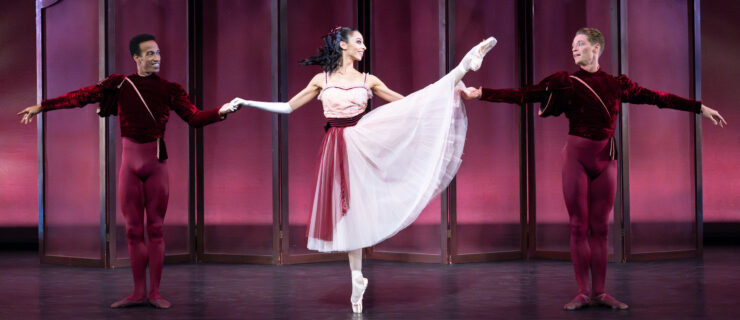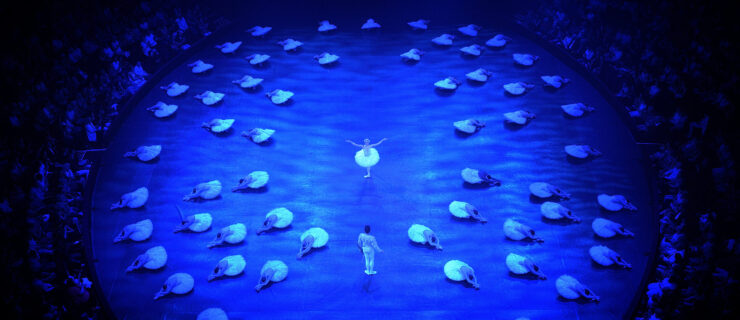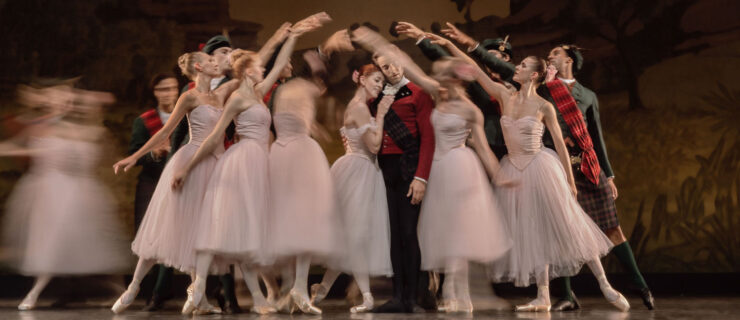So You’re an Understudy… How to Cover Someone Else’s Role Effectively—and Why it Matters
During one of Charlotte Nash’s first few weeks with Houston Ballet II, she was thrown into a run-through of Balanchine’s Theme and Variations. “I had never really understudied before and I didn’t know what I was doing,” she says. “I fell right away and was quickly replaced.” For Nash, now a dancer with Festival Ballet Providence, the episode was a tough lesson. “I was mortified, but then I said to myself, ‘Okay, I need to figure out how to learn things more quickly.'”
When you’re understudying someone else’s role, it can be tempting to take a back seat on the learning process. “Dancers tend to think they won’t be in the performance or they weren’t good enough to be chosen,” says Kristi Capps, ballet master with Kansas City Ballet. “But you are really expected to be just as good as first cast, because at any moment you might have to go on.”
By taking the process seriously, you show choreographers and artistic staff that you are a reliable, capable artist—which could lead to casting opportunities or even a promotion down the road. Below are tips to help you stay focused in and out of the studio, and be stage-ready if you get thrown in.
Understudy with Intention
When learning another dancer’s role, it’s helpful to have a method. Try going into rehearsal with a particular intention, such as paying attention to complex running patterns one day and the port de bras the next, to maintain your focus and make sure you are absorbing everything.
 Nash (center), Kirsten Evans and David DuBois rehearse Balanchine’s Serenade. Dylan Giles, Courtesy Festival Ballet Providence
Nash (center), Kirsten Evans and David DuBois rehearse Balanchine’s Serenade. Dylan Giles, Courtesy Festival Ballet Providence
When learning another dancer’s role, it’s helpful to have a method. Try going into rehearsal with a particular intention, such as paying attention to complex running patterns one day and the port de bras the next, to maintain your focus and make sure you are absorbing everything.
Once you know the choreography well, step back and try to understand the formations. This can be especially important if you are watching multiple spots in the corps. Try to visualize bodies moving in the patterns, says Capps, and keep in mind that when you jump in, you may be with a different cast than the one you have been watching.
While sometimes you may need to stand in the corner because of space constraints, Nash recommends beginning each rehearsal in a different spot in the room to observe the ballet from different angles and make sure you know all of your marks and pathways. “A lot of people stay in one place and go through the motions,” says Nash. “But sometimes it’s good to just watch, so you can focus on the whole picture. When you are always trying to do both, your attention is divided.”
Take Your Work Home
Understudying often has to go beyond the studio when you’re learning in the back. “The choreographer doesn’t have time to give you every detail,” says Alonzo King LINES Ballet dancer Ashley Mayeux.
Boston Ballet soloist Addie Tapp agrees. “You have to take your own time outside of the rehearsal to go over choreography, watch videos or get to know the music better,” she says. Get in the studio early, she advises, or use break times to try things full-out. (Mayeux often reviews roles she’s covering in her hotel room on tour.) If you can organize a group run-through with other understudies or some people from second cast, all the better.
For Nash, humming the steps quietly along with the music or even creating her own story while learning the steps makes them easier to remember. Jot down counts or sketch formations for review later on your own. Whenever Tapp has to understudy a pas de deux without a partner, she makes sure she knows every hand and arm placement before asking another cast member if they’d be up for trying it with her another time. “Some understudies will ask to take their own rehearsal videos, so they can use it to go over it for themselves,” she adds.
 Tapp in Balanchine’s Chaconne. Liza Voll, Courteys Boston Ballet
Tapp in Balanchine’s Chaconne. Liza Voll, Courteys Boston Ballet
Building Confidence
Understudying has added benefits when you do a good job. “If you know something really well, the choreographer or director can tell, and they will often give you a chance,” says Mayeux.
Remember, you were asked to be in the room for a reason, so when you’re told to jump in, go for it. “The artistic staff knows that you are being thrown in, and that rehearsal is your time to figure it out,” says Tapp. Capps agrees. “We can tell the difference between making a mistake and not knowing the steps or the patterns,” she says. “If you are really nervous, it’s okay to ask a question before the run or to quickly walk through something.”
Understudying can also help you build confidence in unexpected ways. “I’ve struggled with stage fright throughout my career,” says Mayeux, “so understudying has always been a lower-stress opportunity for researching my own artistry.” And for Tapp, covering principal roles has given her the time to develop her acting chops. “I love watching how everyone does a role differently and absorbing everything in the room,” she says. “It has also helped me learn how to work more on my own and make choices that look good on me.”
As for Nash, her embarrassing Theme and Variations experience made her a stronger understudy and company member. “Last year I was cast in ‘Rubies’ because I could jump in easily,” she says. “Smart dancers are appreciated, and good things come from being focused and caring about every role.”





